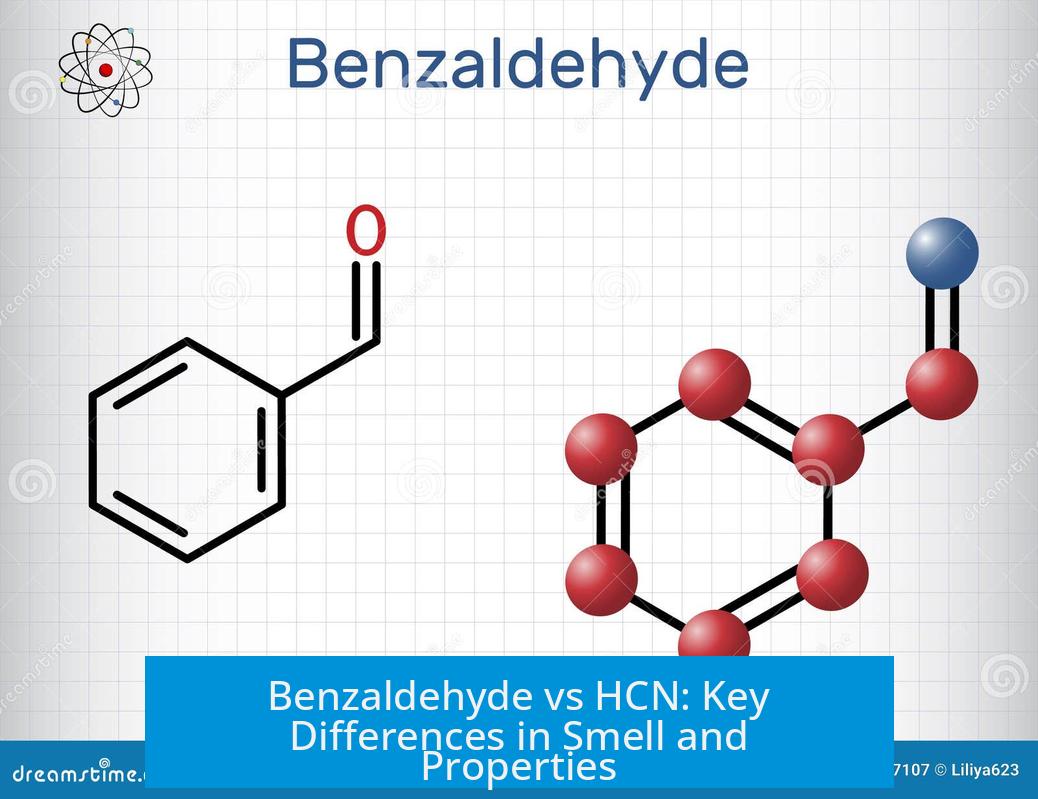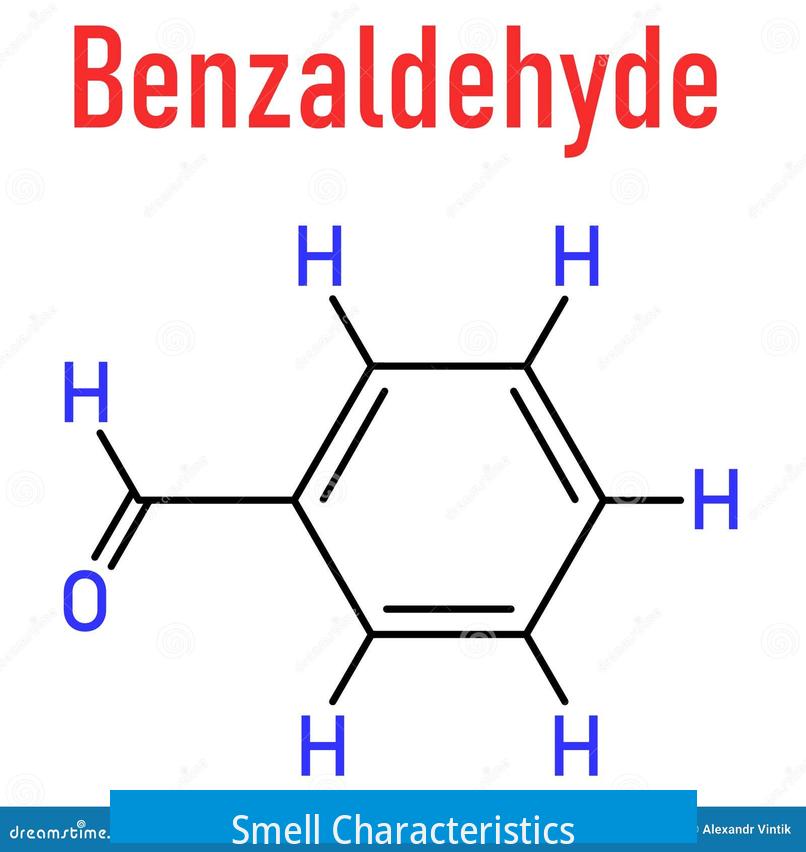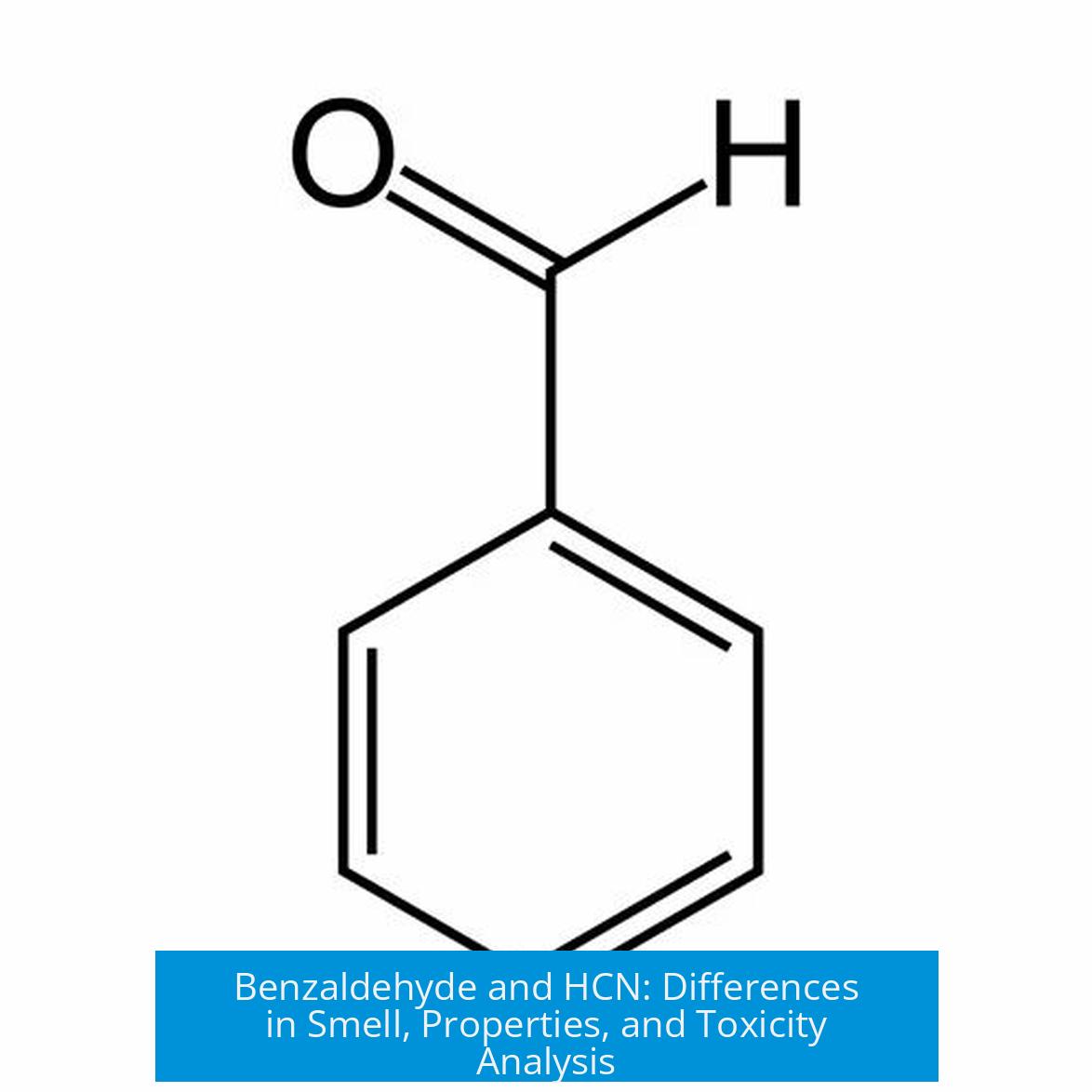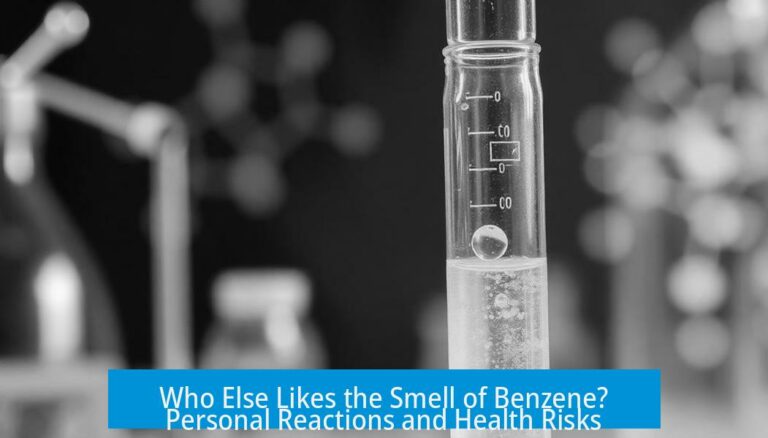Benzaldehyde vs HCN: Key Differences in Smell and Properties

Benzaldehyde and hydrogen cyanide (HCN) differ significantly in smell and chemical nature, despite both being linked to almonds. These contrasts explain their distinct sensory and safety profiles.
Smell Characteristics

- Benzaldehyde emits a pleasant, sweet almond-like aroma. It is commonly used in artificial almond flavoring and fragrance products. This scent resembles cherry cola and Dr. Pepper aromas. Chemicals like nitrobenzene and benzonitrile share similar smells but are not safe for flavor use.
- Hydrogen cyanide (HCN) has a bitter almond scent that is sharp and acrid. This odor is pungent and unpleasant, reminiscent of burnt almonds or pyridine. It also causes a bitter taste, especially noticeable in cyanide exposure. Its strong smell is a warning of toxicity.
Genetic Variation in Cyanide Smell Perception
The ability to detect the bitter almond scent of cyanide varies genetically among people. Some individuals cannot smell HCN even at high concentrations, while others find the odor overpowering. This genetic trait has implications for safety in environments where cyanides are present.
Natural Occurrence and Toxicity
Benzaldehyde and cyanide both occur naturally in seeds like bitter almonds, peach pits, and plum pits. These seeds contain amygdalin, a glycoside that breaks down in the mouth to release benzaldehyde and cyanide. Both chemicals contribute to the unique taste of bitter almonds, but the presence of cyanide renders these seeds toxic.
Summary Table of Key Differences
| Characteristic | Benzaldehyde | Hydrogen Cyanide (HCN) |
|---|---|---|
| Smell | Sweet, pleasant almond (like artificial almond extract) | Bitter, pungent almond (burnt, acrid) |
| Use | Flavoring agent, fragrance | Highly toxic chemical, industrial use |
| Genetic Detection | Universally detectable | Genetically variable |
| Natural Source | Bitter almonds, peach pits (via amygdalin breakdown) | Bitter almonds, plum pits (via amygdalin breakdown) |
| Toxicity | Low | High (dangerous poison) |
Practical Implications
Benzaldehyde is safe at typical exposure levels and used in food flavoring due to its appealing scent. In contrast, HCN’s bitter almond odor serves as a critical warning sign of its toxicity. Awareness of the genetic variation in smell perception is important for safety protocols.
- Benzaldehyde smells sweet and is widely used in flavorings.
- HCN has a bitter, acrid odor signaling toxicity.
- Both arise from natural compounds in certain seeds.
- Smelling HCN depends on genetic traits; some cannot detect it.
- Recognizing these differences aids in chemical safety and understanding flavor chemistry.
What is the main difference between the smells of benzaldehyde and hydrogen cyanide (HCN)?
Benzaldehyde smells like sweet almonds, often described as similar to artificial almond flavoring or cherry cola. HCN has a bitter or burnt almond odor that is sharp and unpleasant.
Can everyone smell hydrogen cyanide (HCN) the same way?
No, the ability to smell cyanide is genetic. Some people can detect its strong bitter almond smell, while others cannot smell it even at high levels.
Are there other chemicals with a smell like benzaldehyde?
Yes, nitrobenzene and benzonitrile share benzaldehyde’s sweet almond aroma, but they are not safe for use as flavorings.
How do benzaldehyde and cyanide relate to the taste of bitter almonds?
Bitter almonds contain amygdalin, which breaks down into both benzaldehyde and cyanide. This mixture contributes to their unique bitter almond taste.
Why might smoking affect the taste perception when working with cyanide?
Smoking while handling cyanide causes a super-bitter taste in the mouth. This effect was once suggested to help those who cannot genetically smell cyanide.





Leave a Comment